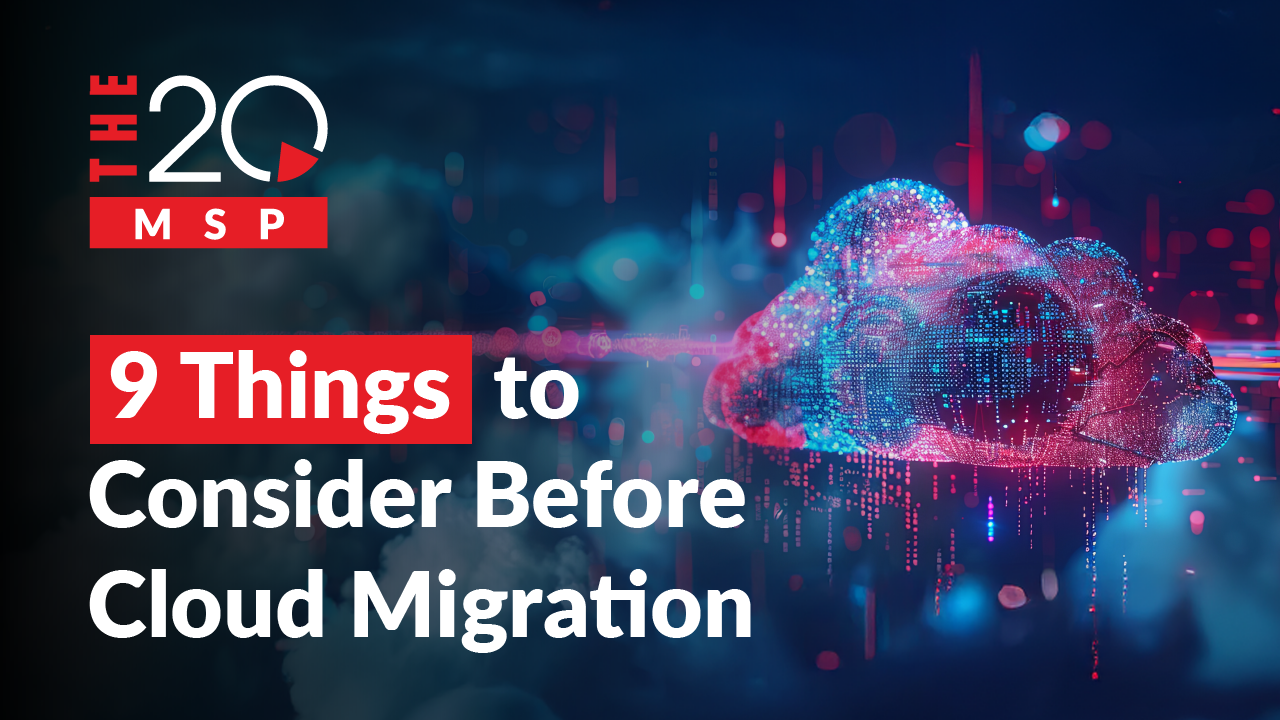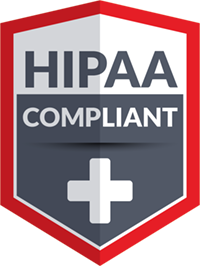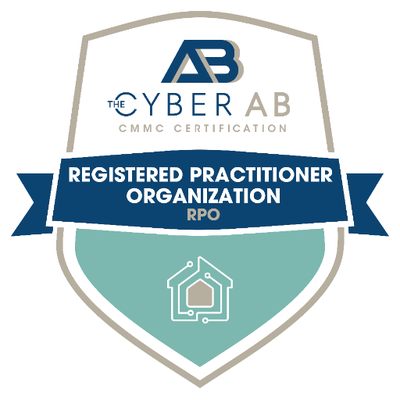
9 Things to Consider Before Your Cloud Migration
You’ve heard about the cloud and you want in. But wait! While the cloud can be incredibly useful, you’ll need to know how to use it properly. According to the Flexera 2024 State of the Cloud report, 32% of your cloud budget could be wasted.
So before you start packing your data’s bags for the big move, take some time to consider your options, as well as the risks associated with the cloud. Of course there’s nothing more effective than teaming up with experts who can help you navigate your migration; but knowing the following 9 things won’t hurt either. In fact, knowing these 9 things can help you avoid some of the most common pitfalls of cloud migrations.
What Is the Cloud?
Let’s start with the basic question: What is the cloud? The cloud is essentially online storage and services. Traditionally, physical hardware was required on-premises (at your office) to store and access data, taking up space, time, and money. But the cloud allows your business to enlist remote hardware – as tech folks like to say, “The cloud is just someone else’s computer.”
For example, nowadays, when you use Microsoft 365 to create documents, Dropbox to store files, or Google Drive to save and share data, you’re using the cloud – i.e., accessing remote servers owned by the cloud provider. Even checking your email through a web browser is a type of cloud service.
This shift to “offshore” technology has only increased in demand – with spending increasing by 23% since 2023 – as more companies embrace remote work.
Let’s take a closer look at exactly why so many companies are making the switch.
The Benefits of Cloud Migration
The cloud lets you skip right to the good stuff – allowing your company access to the tools and software it needs without the hassle of maintaining on-site equipment.
Cost savings are another significant advantage. That’s because many cloud services offer subscription or pay-as-you-go models, like Microsoft Azure, providing greater flexibility for your IT budget. However, it’s important to weigh these costs against the expense of physical hardware. While migrating to the cloud may be a no-brainer for many businesses, it’s not always a straightforward decision for everyone.
The Risks of Cloud Migration
It’s not always clear skies when it comes to the cloud. Here are some risks that come with your migration:
- Downtime during migration: Transferring data to the cloud may cause temporary downtime, so it’s important to plan for this disruption.
- Cost overruns: As mentioned earlier, it’s easy to overspend with cloud usage.
- Incompatibility issues: Some older systems – known as legacy systems – or apps may not play nicely with cloud platforms.
- Staff frustrations: Without proper training and clear expectations, employees may find the transition to the cloud confusing or frustrating.
- Compliance issues: Not all cloud vendors adhere to industry-specific regulations, potentially putting your business at risk of non-compliance.
We always, always recommend consulting with a trusted expert like us before making any major decisions. A managed service provider (MSP) can guide you in the right direction, helping you pinpoint where the cloud will benefit you most.
But knowing the basics can go a long way toward making informed decisions and ensuring your migration is smooth and successful. So, without further ado, here are the 9 things you need to consider before your cloud migration.
1. What Are Your Goals?
Before migrating to the cloud, you should have a clear reason beyond vague goals like “optimizing your business’s efficiency.” Are you prioritizing data security? Slimming down your IT budget? Or aiming for a centralized way to store and share data for better collaboration?
Gaining full visibility into your operations is vital to identifying which areas will benefit most from the cloud – and this is where an MSP can make all the difference thanks to their cutting-edge monitoring tools.
2. What’s Your Budget?
The cloud can save business 25% in infrastructure costs annually. However, to truly realize these savings, you need to establish a clear budget and plan accordingly.
Here are some factors to consider when budgeting for your cloud migration:
- Subscription costs: Determine the number of subscriptions or licenses you’ll need per user. Most cloud services offer tiered plans, so choose one that best suits your needs. Don’t forget to account for these ongoing charges in the future!
- Migration expenses: Plan for the one-time costs of transferring your data, training employees, and configuring your cloud services.
- Cost control tools: Many cloud providers offer cost control tools that help you monitor and manage expenses – such as Azure Cost Management.
3. Consider Data Security
There’s a good chance you’ll be transferring sensitive information – both your own and your clients’. Your new cloud environment must meet the necessary security standards to stay compliant with industry regulations.
Beyond compliance, consider access control: who will need access to specific data and from where? Defining these permissions early will help keep your data safe.
4. Understand Scalability
While the cloud offers scalability through models like “pay-as-you-go,” understanding its limitations is critical to avoiding unexpected costs. Some platforms will have maximum storage caps or other restrictions, meaning you may need to pay for upgrades as your needs grow.
Unused licenses or resources can quickly add up if left unmanaged. Additionally, scaling up during peak times without scaling down afterward can significantly boost your bill. Regular cloud usage and license audits, coupled with monitoring tools, will help you keep your cloud setup clean and efficient.
5. What Type of Cloud(s)?
When migrating to the cloud, you’ll need to decide what type of cloud solution fits your business. Here are your options:
- Public cloud solutions: These include well-known services such as Amazon Web Services (AWS), Microsoft 365, and Google Cloud Platform (GCP). In a public cloud, security responsibilities are shared: the provider secures the infrastructure (the cloud itself), while the user is responsible for their data and applications.
- Private cloud solutions: Operating over a private network, these solutions give your business more control and can provide enhanced security. However, they are typically more expensive and require more effort to set up and maintain.
- Hybrid cloud solutions: This is a mix of a public and private environment, allowing businesses to leverage the benefits of both.
For most small to medium-sized businesses, a public cloud solution will work great. However, if your business handles highly sensitive data or has strict security requirements, a private or hybrid cloud solution may be worth considering.
6. What Tools Do You Need?
If you’re migrating a large amount of data, cloud migration tools are a must. These tools help by automating uploading tasks as well as keeping your data intact, all while maintaining security.
One tool we recommend is Azure Migrate, due to its ability to cater to various needs, from small-scale data transfers to larger enterprise-level migrations. The right tool can make all the difference, so do your research!
7. How Will You Prepare Your Team?
Make sure your team is ready for the coming changes. Let them know what data will be moving, how to access it once it’s moved, and what changes to expect.
Consider providing training sessions before the migration so everyone is comfortable with the new system. Training will help smooth the transition and allow your team to hit the ground running at launch.
8. Consider the Future
Once your migration is complete, cloud tools make it easy to monitor performance and track the effectiveness of your new environment. It’s important you regularly check in on how things are running and adjust – adding or removing tools as necessary.
This is another instance where an MSP can be a lifesaver, as they will already be monitoring your cloud performance and can easily provide insight into your cloud environment. Also, don’t forget to reach out to your employees to see how they are adapting to the changes and where improvements can be made.
9. Work With a Pro
While it’s possible to handle your own cloud migration, we highly recommend working with an expert partner, such as an MSP like us. We can help you achieve your goals, answer any questions, and identify potential issues before they arise, providing you with peace of mind throughout the entire process.
Looking for trusted experts to help with your cloud migration? Schedule a call today, and let’s get started.
About The 20 MSP
As a leading provider of managed IT services, The 20 MSP serves thousands of businesses nationwide, providing each one with white-glove service, secure and streamlined IT infrastructure, and 24/7/365 support. We believe in building lasting relationships with clients founded on trust, communication, and the delivery of high-value services for a fair and predictable price. Our clients’ success is our success, and we are committed to helping each and every organization we serve leverage technology to secure a competitive advantage and achieve new growth. To learn more, visit the20msp.com.



